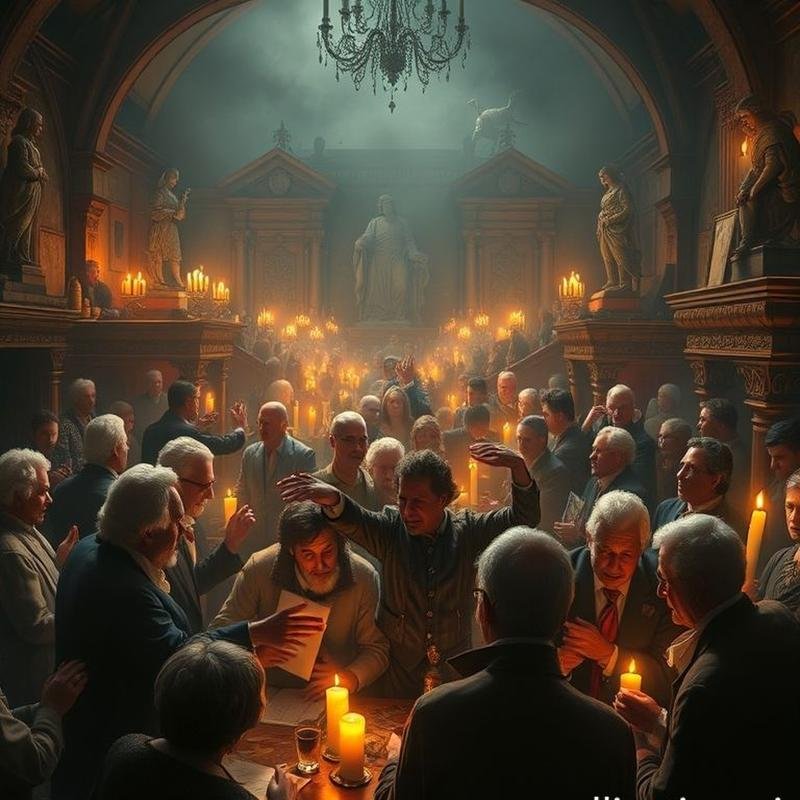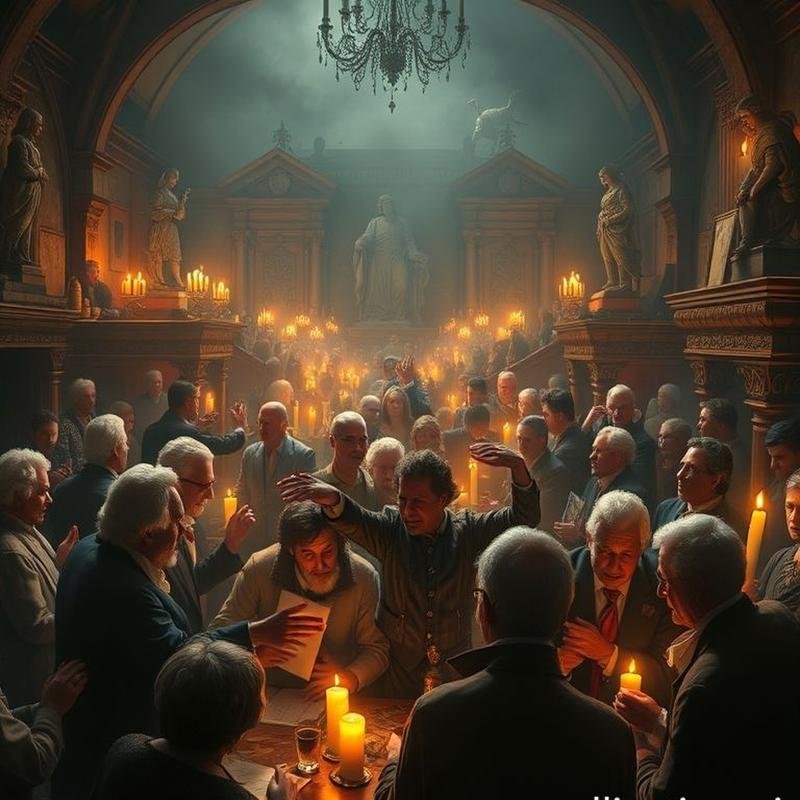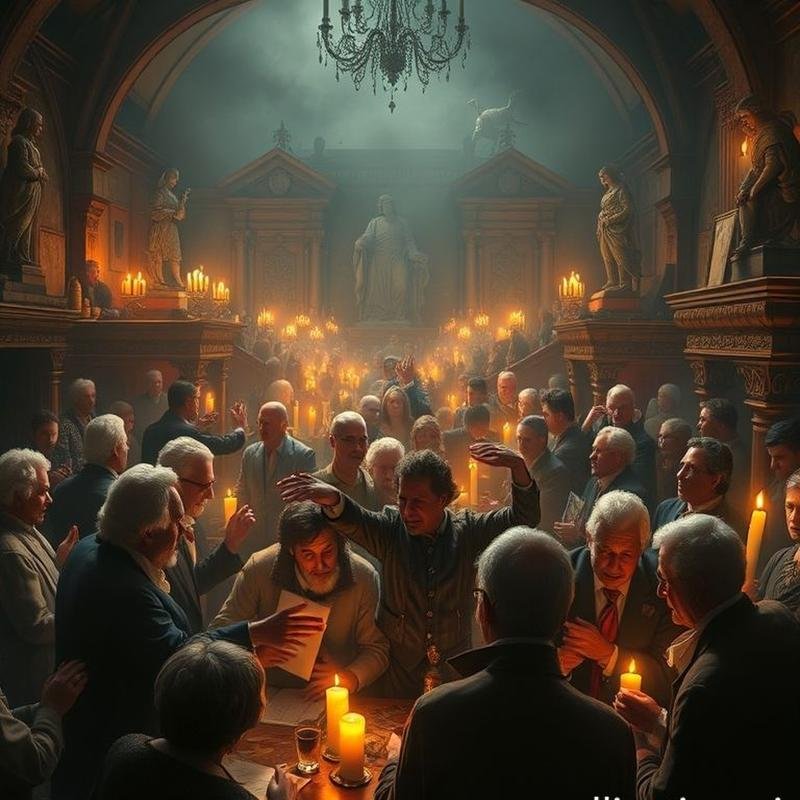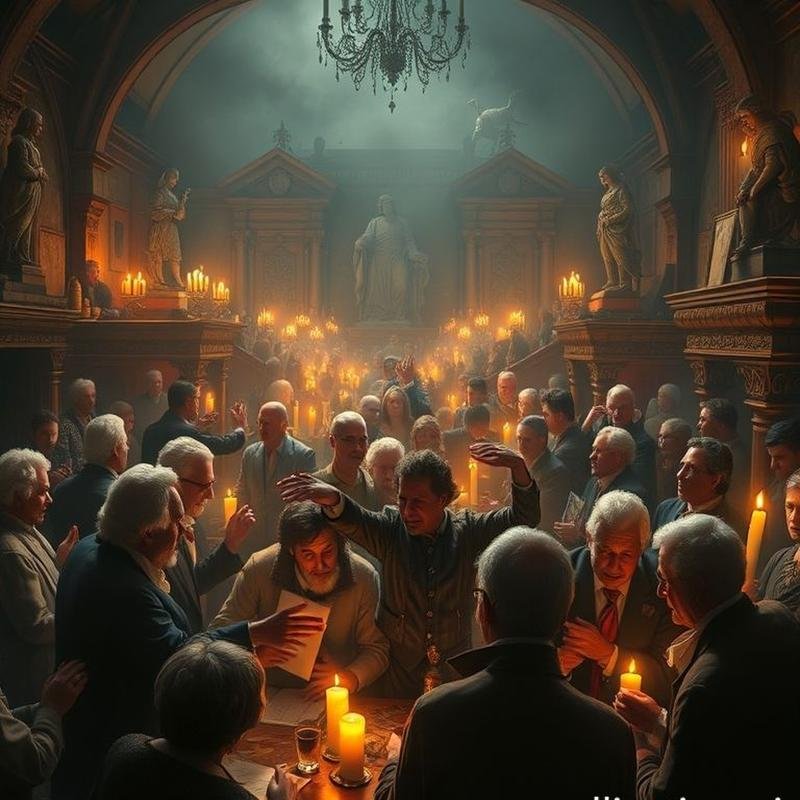“Rabbit Woman”: The Most Bizarre Medical Hoax in History.

Rabbit Woman: Medical Hoax & 1700s Superstition
In 1726, childbirth was not merely a natural event, but often a brutal ordeal. The case of Mary Toft, who claimed to give birth to rabbits, highlights this era. How did the medical elite accept such a bizarre hoax? This episode delves into the mind of Mary Toft, exploring how society’s fascination with medical marvels exposed the vulnerabilities of science and the enduring human desire to believe the impossible.
Before we unravel this deception, share your expectations and hypotheses in the comments. Subscribe to the channel to follow our step-by-step investigation of this astonishing truth.
The Superstitious Landscape of 18th-Century Britain
In 1726, during the reign of King George I, Britain was navigating a path between emerging political stability and deeply ingrained medical superstition. With a life expectancy of approximately forty years, disease was rampant, fostering susceptibility to fantastical beliefs. The prevailing belief that a mother’s desires during pregnancy could grotesquely deform her fetus was widespread. This era held the superstition that if a pregnant woman intensely craved something and was denied it, her child might bear a birthmark or deformity reflecting that object. Against this backdrop of superstition, Mary Toft emerged, poised to exploit these fears with her outlandish tale.
The proliferation of newspapers and periodicals facilitated the rapid dissemination of news and rumors, amplifying the impact of Mary Toft’s story. Doctors, scientists, clergymen, and the general public all discussed the case, each interpreting it through their own perspectives. However, the nascent science of anatomy was hampered by societal constraints and resistance to dissection, hindering the understanding of fundamental biological principles.
Mary Toft: The Woman Behind the Myth
Mary Toft… a name forever etched in medical history. But who was this woman who challenged the foundations of 18th-century medical society? Born in 1703 in the quiet village of Godalming, Mary came from a working-class background. Her father, a laborer, instilled resilience, while a harsh life fostered her determination. Mary married Joshua Toft, a carpenter, and bore him three children, leading a monotonous existence until her extraordinary story began to circulate. Mary was not highly educated or exceptionally intelligent, but rather a simple woman of her village, which may have been the key to her influence. In a society steeped in superstition and myth, believing a common woman was perhaps easier than trusting a discerning physician.
Months before her claims, Mary reported a shocking experience while working in the fields, when a rabbit startled her. Was this the catalyst for the deception, or merely an excuse for the wild fantasies that followed? Amidst harsh living conditions and a desire for recognition, Mary may have seen this story as an opportunity to escape obscurity. Her story quickly garnered the attention of local doctors, then royal physicians, including Nathaniel St. André, surgeon to King George I. Crowds flocked to Godalming to witness Mary’s “miracle,” temporarily stimulating the village’s economy. Was Mary a victim of circumstance, or a cunning manipulator who exploited the gullibility of her society? This is what we aim to explore.
Royal Attention and Initial Belief
As the news spread rapidly, the quiet village of Godalming transformed into a bustling center of activity. This attracted not only public curiosity, but also the attention of leading physicians and even whispers within the royal court. Nathaniel St. André, the esteemed royal surgeon, traveled to the remote village, determined to witness this phenomenon firsthand. After examining Mary, St. André confidently declared that he had personally witnessed the birth of a rabbit, lending royal credibility to the seemingly fictional story. St. André further published a detailed report entitled “A Clear Proof,” documenting Mary Toft’s claims as undeniable scientific fact. This report, issued by a prominent figure in the royal court, transformed the story from rumor to accepted truth within the highest medical circles. King George I, intrigued, dispatched surgeon Cyriacus Ahlers to investigate independently, and Ahlers initially corroborated the story, adding further royal legitimacy. It was, by all accounts, an absurd moment.
The Seeds of Doubt and Unraveling the Hoax
However, doubts soon emerged. As Mary Toft’s story spread, King George I sent the royal anatomist, Nathaniel St. André, to investigate. After examining Toft following the supposed birth of the ninth rabbit, St. André declared it genuine, reinforcing the story’s credibility. However, Cyriacus Ahlers remained skeptical, arguing that the continuous birth of animals was anatomically impossible and suspecting deception. Ahlers detected a foul odor in Toft’s room, further fueling his suspicion. Meanwhile, James Douglas, a prominent obstetrician, examined Mary Toft and discovered underdeveloped rabbit parts, questioning how they could have reached her uterus. Despite St. André’s validation, Douglas meticulously began to gather evidence of deception. The doctors were unable to find an anatomical explanation for Toft’s supposed pregnancy, adding to the unease. This marked the beginning of a thorough investigation, signaling the unraveling of the elaborate hoax.
Confession and Exposure
As doubts grew, the threads of the story began to unravel, revealing its astonishing details. At the London hospital, under close observation, Mary Toft ceased producing rabbits. John Howard, a surgeon who had initially believed her, began to harbor doubts as her suspicious behavior became apparent. Rabbit parts, feces, and droppings were discovered in her room, providing damning evidence of her deception. Nathaniel St. André, after a thorough examination, could not explain the contradictions in Mary’s story, particularly how underdeveloped rabbits could reach her uterus. The pressure mounted, and the threat of exposure loomed. On December 7, 1726, Mary confessed, admitting that she had inserted the rabbit parts into her uterus with the help of others, revealing the truth.
Aftermath and Repercussions
Following her confession, Mary Toft’s fabricated image crumbled. She was no longer a simple rural woman carrying a medical miracle, but a figure of ridicule and scorn. Caricatures and satirical poems circulated, depicting Mary giving birth to rabbits amidst the astonishment of incredulous doctors. The repercussions extended beyond Mary, tarnishing the reputation of the medical establishment. Cyriacus Ahlers, who had initially trusted her, was compelled to issue a public apology to salvage his professional standing. John Howard, who uncovered the hoax, faced pressure from colleagues who felt insulted and ashamed. Mary Toft was briefly imprisoned for fraud but was soon released, spending the rest of her life in isolation, bearing the stigma. Doubts persisted regarding the involvement of others, including her family, in the conspiracy.
The Lasting Impact: Society, Science, and Superstition
The case ignited a debate about the credibility of medical science and the susceptibility of experts to deception. How could reputable doctors believe a fictional story lacking any basis in reality? Was the motive fame? Those who felt insulted and ashamed questioned the innocence of others. But why did people believe this story in the first place? In a European society anxious about the erosion of its values, Mary Toft’s story served as a dark affirmation of those fears, a sign of societal decay. Medical authority played a crucial role in this collective belief. John Howard initially declared his absolute belief in Mary’s story, granting her credibility she would not have otherwise possessed. This was not merely a fleeting desire for fame, but perhaps a reflection of deep-seated societal biases.
The inherent fear of the “hysterical woman” was prevalent. Women were perceived as prone to mental and physical instability, making Mary’s story seem, in a distorted way, believable. This perception, deeply ingrained in the collective consciousness, contributed to the widespread acceptance of the story. Furthermore, the human desire for extraordinary stories that challenge scientific understanding cannot be overlooked. At the time, empirical science lacked the precision of modern science, lacking controlled studies, statistical analysis, and rigorous peer review. This absence of systematic controls made doctors vulnerable to misinformation and rumors. Mary Toft’s case must be understood within its social context. Social pressure and
Video Explanation







